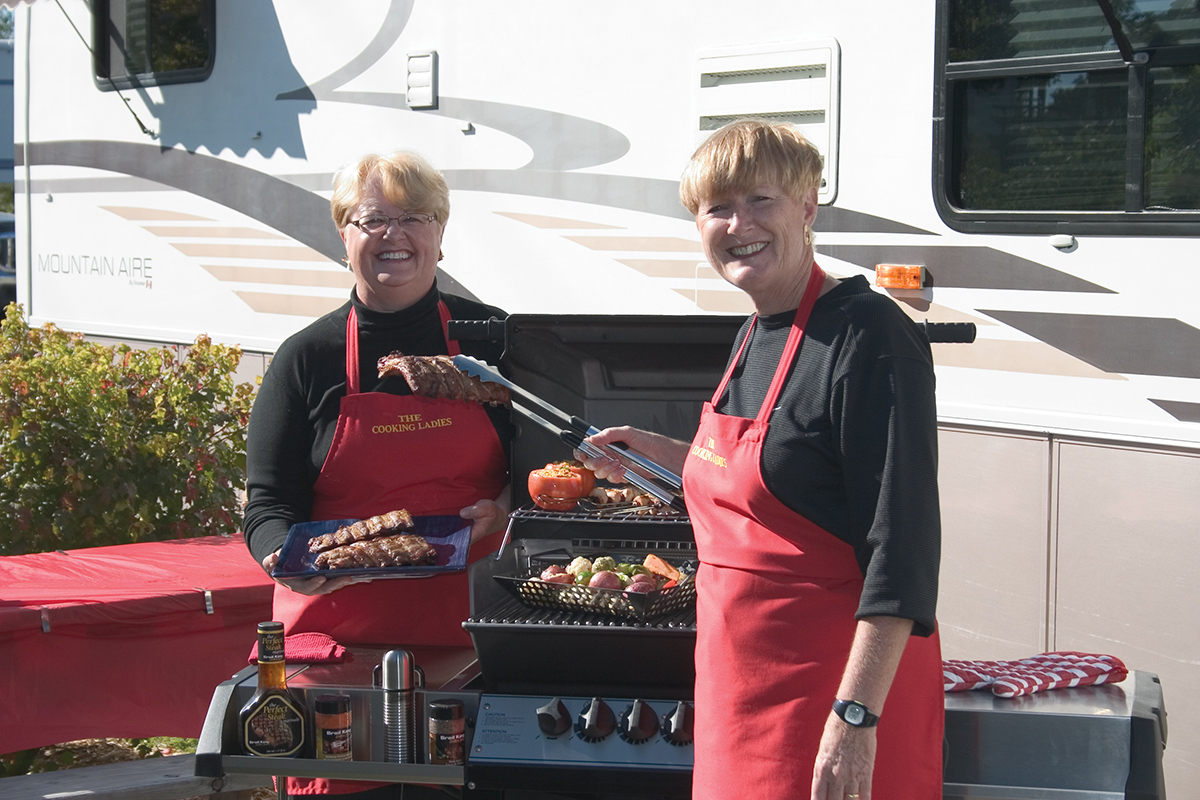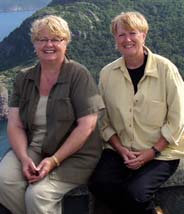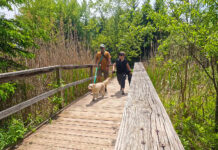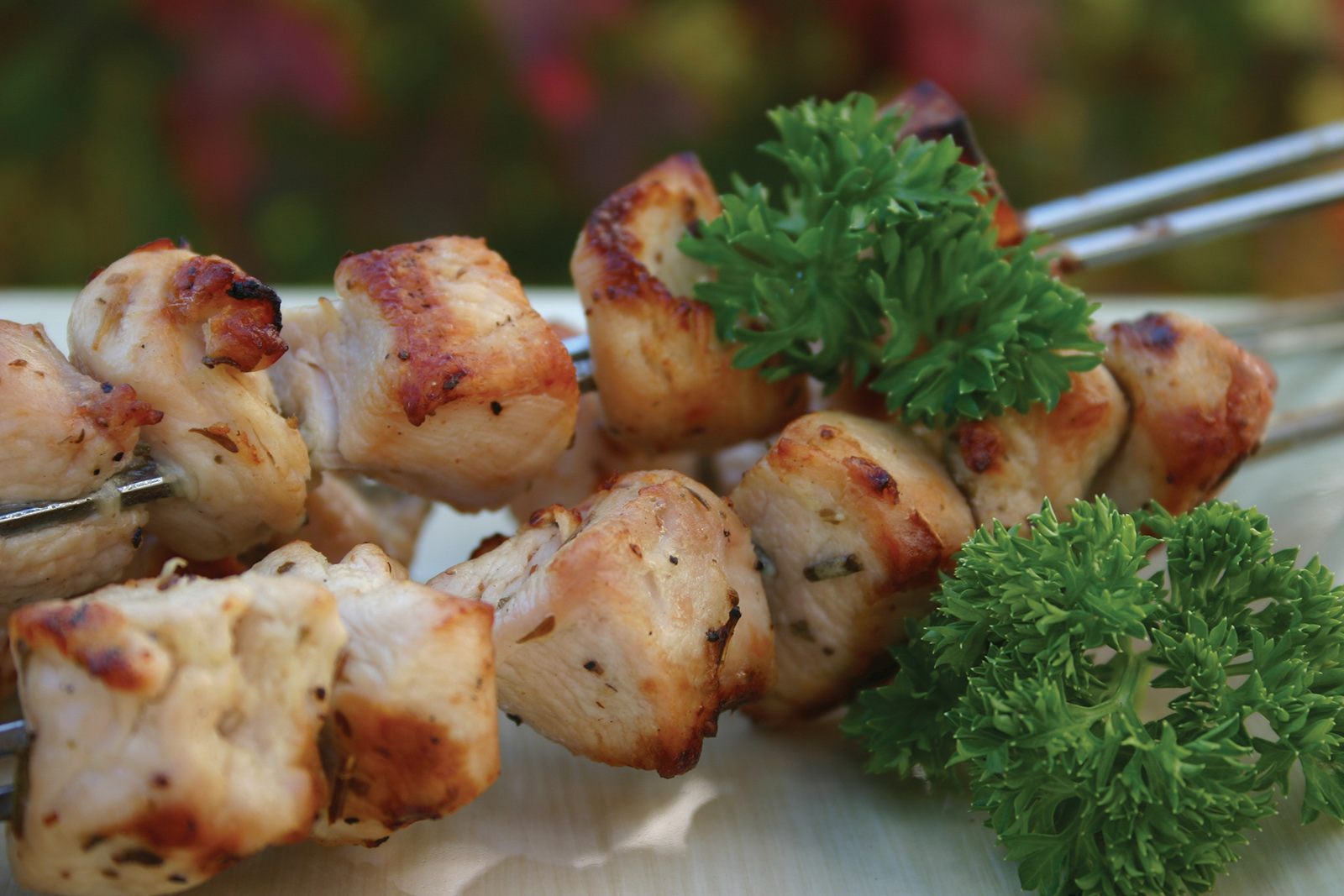These tasty chicken nuggets are worth their weight in gold!
(Makes 5 servings)
Ingredients
- 3/4 cup (180 mL) olive oil
- 1/4 cup (60 mL) balsamic vinegar
- 1/2 cup (125 mL) white vinegar
- 2 tablespoons (30 mL) white sugar
- 1 small onion, sliced and separated into rings
- 4 cloves garlic, sliced
- 1/2 teaspoon (2.5 mL) salt
- 1/2 teaspoon (2.5 mL) pepper
- 1 teaspoon (5 mL) dried thyme
- 1 teaspoon (5 mL) dried marjoram
- 1 teaspoon (5 mL) dried oregano
- 4 boneless, skinless chicken breasts
Directions
- Combine olive oil, balsamic vinegar, white vinegar, sugar, onion rings, garlic, salt, pepper, thyme, marjoram, and oregano in a bowl. Mix well.
- Cut the chicken breasts into approximately 1-inch (2.5 cm) cubes.
- Pour the marinade into a zipper-style storage bag and add the chicken cubes. Seal it tightly. Shake it up, refrigerate, and marinade for 12 to 24 hours. Discard the marinade.
- Thread the chicken cubes on skewers with space between the pieces to help each piece cook more evenly.
- Preheat the barbecue on high for 10 minutes. Turn the heat down to medium. Oil the grate before placing the kebobs on the heat.
- Grill with the lid closed for 5 to 6 minutes on each side or until the chicken is cooked and the juices run clear.
 Riverboats, Roadhouses and Barbecue In Search of Yukon Gold
Riverboats, Roadhouses and Barbecue In Search of Yukon Gold
When we were in the Yukon, we hiked the 219 steps down from the Klondike Highway to the Five Fingers Rapids located in the most famous stretch of the Yukon River. The rapids are formed by four huge pillars of conglomerate rock that split the river into five channels or “fingers”. For nearly 100 years stern-wheel riverboats traveled on the Yukon River. Skilful pilots guided the boats through these natural hazards.
During the Klondike Gold Rush, and for years following it, the quickest way from Whitehorse to Dawson City was by boat along the Yukon River. In those days, the lives of the people in the territory were governed by whether the river was open or frozen. In 1902, the first winter road was built between the two communities. It was 531 kilometres long, shorter than the river route by 113 kilometres. Named the Overland Trail, it followed ancient First Nations pathways. Over the years, the route was altered to access new mining camps as they sprang up.
The trip between Whitehorse and Dawson took from three to ten days depending on the season and conditions. Staging posts were built every 32 to 48 kilometres along the trail. A stage or sleigh would stop at two or three roadhouses in a day. At each stop passengers ate and rested while horses were changed. A long table was used to serve up moose, caribou, mountain sheep, and huge dishes of baked beans. A great menu for a barbecue!
Speaking of barbecue, these tasty chicken nuggets are worth their weight in gold and can be eaten hot or cold.
 Follow The Cooking Ladies on Facebook, Twitter, Instagram and Pinterest. Links are on their website: www.thecookingladies.com
Follow The Cooking Ladies on Facebook, Twitter, Instagram and Pinterest. Links are on their website: www.thecookingladies.com
Phyllis Hinz & Lamont Mackay are authors of On The Road With The Cooking Ladies, Let’s Get Grilling https://amzn.to/2OSGLbZ and a new series of guidebooks Stratford For All Seasons https://amzn.to/38w4bvu






















